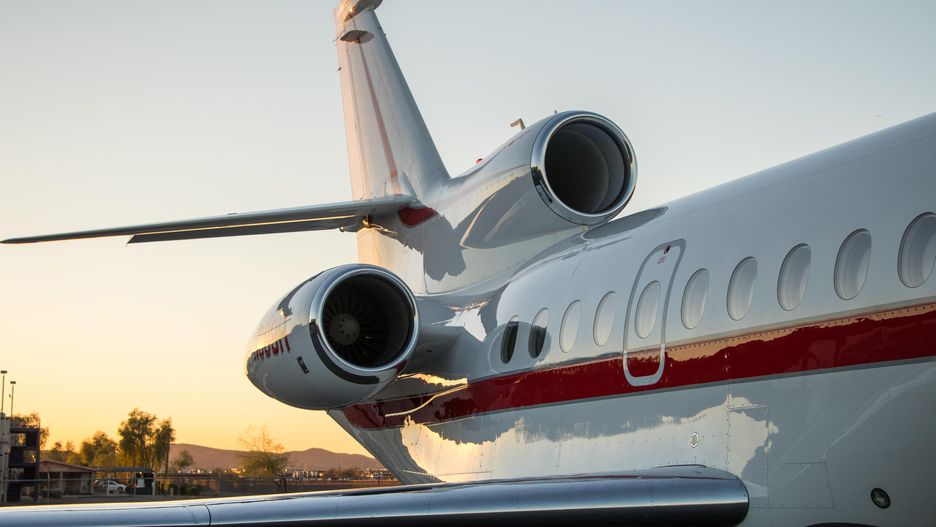According to a report by SmarTech Analysis, dubbed “Opportunities in Additive Manufacturing for Civil Aviation Parts Production, 2019-2029“, the aerospace industry “has seen larger than ever before investments in AM hardware and materials,” and is likely only at the beginning of its potential growth curve. Since 2007, Phoenix-based Fortune 100 technology company Honeywell has been using metal additive manufacturing to fabricate aircraft components, as its Aerospace business unit builds cabin and cockpit electronics, aircraft engines, mechanical components, and more for the aviation sector. Because the technology is capable of making parts more lightweight and remaking complex assemblies as a single component, it’s definitely found a home in the aerospace industry, and Honeywell has been working to qualify multiple AM technologies for the production of aerospace parts.
But, before these 3D printed parts can take flight, they must be approved by the Federal Aviation Administration (FAA), which has been working since 2017 to develop a comprehensive regulatory plan to deal with AM adoption within the aerospace industry. That’s why Honeywell is excited to announce a major milestone for additive manufacturing and aviation—it has created the first 3D printed, FAA-certified, flight-critical engine part.
“This is a major milestone for Honeywell because it demonstrates the maturity of our additive manufacturing operations and paves the way for us to print more certified, flight-critical parts in the future. It also is a major win for the additive industry, as flight-critical parts face heavy scrutiny and high standards for qualification and installation on aircraft, but this shows it can be done,” Jon Hobgood, Vice President of Manufacturing Engineering for Honeywell Aerospace, stated in a press release.
The 3D printed part, currently in production, is called the #4/5 bearing housing, and is an important structural component in the ATF3-6 turbofan engine, which was designed and certified in the 1960s. Currently, there are only about a dozen of these engines still in active use in the air, such as the ones installed on the Dassault Aviation Falcon Guardian 20G maritime patrol craft, which are used for search-and-rescue missions and regular patrols by the French Navy.
“Though there aren’t many in service, Honeywell is responsible for supporting and maintaining these engines,” Hobgood explained. “We had to find a way to address these supply chain issues and keep these aircraft flying. We were able to use our expertise in additive manufacturing to produce the qualified part much faster, reducing our lead time from approximately two years to two weeks.”
Because so few of these engines are currently in use, this creates difficulties for the Falcon Guardian 20G in terms of sourcing and the supply chain. Flight-critical or safety-critical parts such as this, which are placed into this category by regulatory bodies like the FAA, must 100%, all the time, function the way they’re intended. If they malfunction, or fail, the aircraft could sustain major damage, which then endangers the safety of the passengers and crew members aboard the plane. So obviously, these kinds of critical parts are under the microscope by the FAA, and have to be approved before they can be installed and used on a plane. Obviously, this makes the qualification process much longer.
“The FAA is not going to let you change the shape of a component that’s already been certified,” Honeywell Aerospace’s AM Engineering Fellow Donald Godfrey said during a panel at RAPID 2019. “If you do that, then you have to re-certify the engine, and we’re not going to do that. We’re just not going to re-certify the engine for an airplane.”
Moving past these potential safety issues, the #4/5 bearing housing is hard to build, which, because of the lower amount of orders, makes it expensive to replace. This high price goes up when making the part through traditional casting methods, which is what makes additive manufacturing such an attractive alternative. The technology can print the parts in smaller quantities, at a higher rate of speed, for less cost.
Honeywell and the FAA have been working together to develop and certify multiple 3D printed aviation components, such as the #4/5 bearing housing, which the company says has allowed it to “be the first component approved under the normal FAA delegated authority.” This will help grease the wheels for future aviation component certification, as well as boost supply chain shortages for the complex engine part.
3D printing production is currently ongoing for the #4/5 bearing housing, one of which has already been installed on an in-service ATF3-6 turbofan engine. By the end of 2020, Honeywell expects to print dozens more of the component.
(Source/Images: Honeywell)
Subscribe to Our Email Newsletter
Stay up-to-date on all the latest news from the 3D printing industry and receive information and offers from third party vendors.
Print Services
Upload your 3D Models and get them printed quickly and efficiently.
You May Also Like
Making Space: Stratasys Global Director of Aerospace & Defense Conrad Smith Discusses the Space Supply Chain Council
Of all the many verticals that have been significant additive manufacturing (AM) adopters, few have been more deeply influenced by the incorporation of AM into their workflows than the space...
EOS in India: AM’s Rising Star
EOS is doubling down on India. With a growing base of aerospace startups, new government policies, and a massive engineering workforce, India is quickly becoming one of the most important...
PostProcess CEO on Why the “Dirty Little Secret” of 3D Printing Can’t Be Ignored Anymore
If you’ve ever peeked behind the scenes of a 3D printing lab, you might have caught a glimpse of the post-processing room; maybe it’s messy, maybe hidden behind a mysterious...
Stratasys & Automation Intelligence Open North American Tooling Center in Flint
Stratasys has opened the North American Stratasys Tooling Center (NASTC) in Flint, Michigan, together with automation integrator and software firm Automation Intelligence. Stratasys wants the new center to help reduce...





































